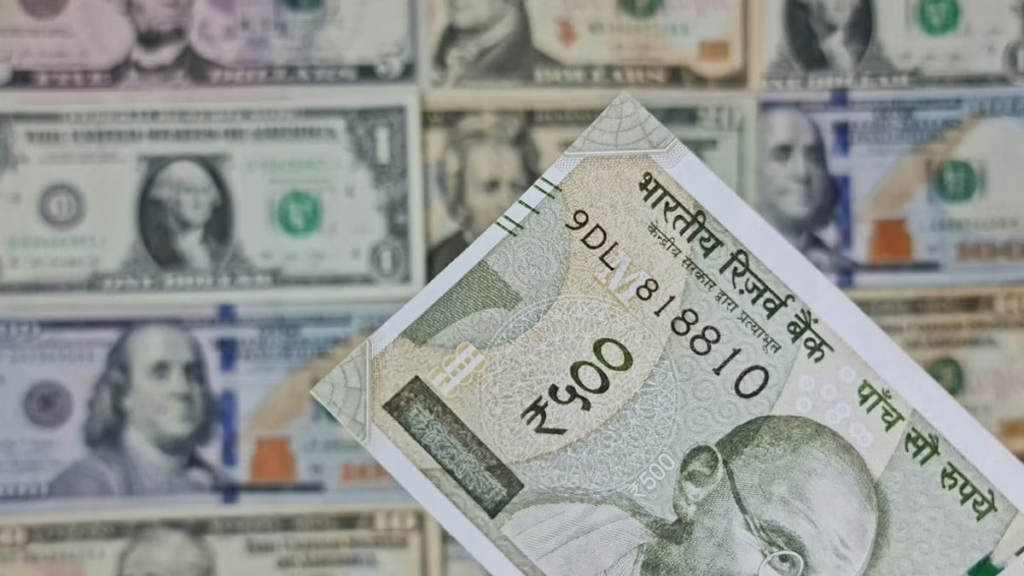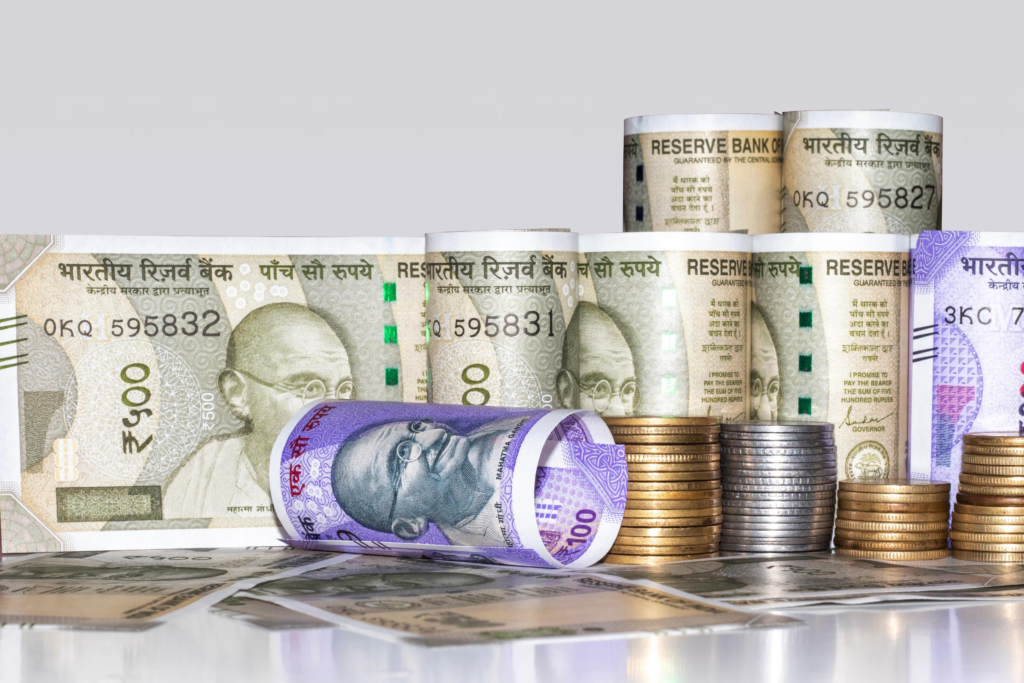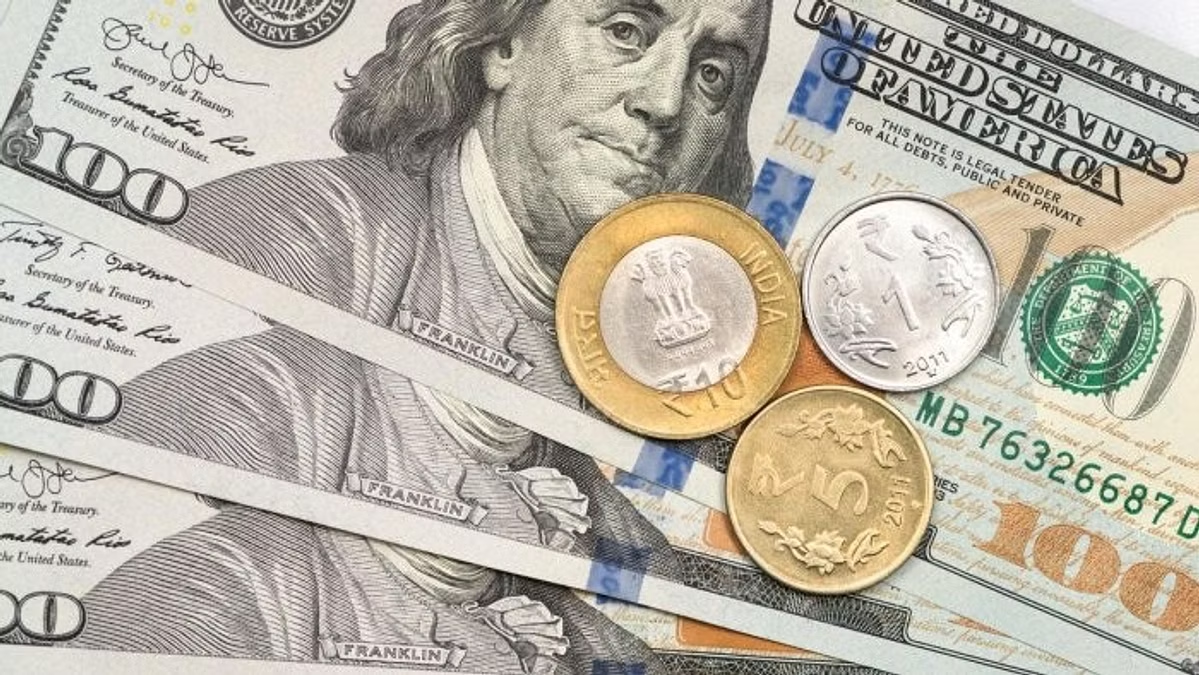Indian Rupee Falls to 84 Against US Dollar for the First Time Ever, The Indian rupee breached a significant milestone on October 11, 2024, when it crossed the 84 mark against the US dollar for the first time in history.
This decline of 12 paise, bringing the rupee to a record low of 84.0975 per dollar, is a reflection of multiple factors including the continued outflow of foreign funds from Indian equities and elevated crude oil prices amid global economic uncertainties.
The weakening rupee is a sign of concern for the Indian economy as it battles rising inflation, a volatile stock market, and fluctuating oil prices.
The Outflow of Foreign Portfolio Investments
One of the primary reasons for the rupee’s fall has been the significant outflow of foreign funds from Indian equities. Foreign portfolio investors (FPIs), who had been actively investing in Indian markets, have now emerged as large sellers.
In the past nine days, FPIs have sold shares worth ₹1.13 lakh crore, including ₹65,000 crore in the cash segment. This massive withdrawal of investments has increased the demand for dollars, driving the rupee down further.
Read : Warren Buffett Lost 60 Million US Dollars by Sitting on It and Not Investing in Market: Samir Arora
Foreign investors typically bring in dollars to invest in India, and during outflows, they take their investments out in US dollars. The inflow of dollars increases its supply and makes it cheaper compared to the rupee. On the other hand, when there is an outflow of dollars, the demand rises, making it more expensive.
Read : Breaking the Bank: Exploring the Top 10 Strongest Currencies in 2024
In the current scenario, the ongoing global uncertainties and the pullback of foreign investments have caused a spike in demand for the dollar, leading to the depreciation of the rupee.

Anil Kumar Bhansali, head of treasury and executive director at Finrex Treasury Advisors LLP, explained the situation: “After keeping it in a range below 83.99 since August 8, 2024, the rupee finally weakened past 84.00 as FPIs have emerged as big sellers in Indian equities, thus raising dollar demand.”
This trend is likely to continue in the short term as experts predict further weakening of the rupee, with expectations that it may touch 84.25 soon.
Importers, who buy dollars to pay for goods and services from abroad, will likely continue buying at any dip in the value of the dollar, while exporters might hold off on their transactions, waiting for a more favorable exchange rate.
The Role of Crude Oil Prices
Another critical factor contributing to the rupee’s fall is the surge in global crude oil prices. The price of Brent crude oil, which serves as the global benchmark, has risen sharply from $69 per barrel at the end of September to $78.92 per barrel now.
This spike in oil prices is linked to the ongoing geopolitical tensions, particularly the conflict involving Iran, Israel, and Lebanon, which shows no signs of de-escalation.
As long as these tensions persist, crude oil prices are expected to remain elevated, putting further pressure on the Indian currency.
India, as one of the world’s largest importers of crude oil, is particularly vulnerable to fluctuations in oil prices. Higher oil prices increase the country’s import bill, leading to a higher demand for dollars to pay for these imports, which in turn drives the rupee lower.
The relationship between oil prices and the rupee is well established, and in the current situation, the elevated oil prices are a significant headwind for the Indian currency.

Bhansali commented on the situation, noting that the Iran-Israel-Lebanon conflict and its impact on oil prices are likely to keep the rupee under pressure: “The Iran-Israel-Lebanon issue also continues with no de-escalation, which could keep crude oil strong and the rupee weaker.”
The combination of foreign fund outflows and rising oil prices creates a challenging environment for the Indian rupee. Both factors have a compounding effect, and until there is some relief in either area, the rupee is likely to remain under pressure.
Global Economic Uncertainties and China’s Influence
Global economic uncertainties also play a crucial role in the current depreciation of the Indian rupee. The US dollar has continued to strengthen in recent weeks, driven by higher yields on US government bonds and a relatively robust US economy.
The dollar index, which tracks the strength of the US dollar against a basket of six major currencies, has hovered around 102.90, signaling continued demand for the greenback.
The strength of the US dollar has been a headwind for many emerging market currencies, including the rupee. Additionally, the recent stimulus measures announced by China have drawn foreign investors towards Chinese equity markets, further reducing inflows into Indian equities.
China’s recent stimulus measures included a 10-basis point policy rate cut and a 50-basis point reduction in the cash reserve ratio, making Chinese equities more attractive to investors due to their lower valuations.
Moreover, market analysts anticipate that China might unveil an additional fiscal stimulus worth 2 trillion yuan ($283 billion) to further support its economy.
This potential stimulus could exacerbate the outflow of foreign funds from Indian markets as investors seek higher returns in China. The shift of foreign investments to Chinese equities is another factor weakening the rupee as it reduces the inflow of dollars into India.
While European currencies have shown some strength in recent days, moving in a narrow range, Asian currencies, including the rupee, have remained range-bound.
The South Korean central bank’s decision to cut interest rates by 25 basis points for the first time in four years is indicative of the economic challenges faced by many countries in the region, and the rupee is no exception.

The Indian rupee’s fall to a record low of 84 against the US dollar marks a significant moment for the Indian economy. The depreciation of the rupee is a reflection of the broader economic challenges facing the country, including the outflow of foreign portfolio investments, rising crude oil prices, and global economic uncertainties. As long as these factors persist, the rupee is likely to remain under pressure.
The outflow of foreign funds, driven by global investors moving their money to more attractive markets like China, is a major contributor to the rupee’s decline. The elevated crude oil prices, fueled by geopolitical tensions in the Middle East, have also added to the pressure on the Indian currency.
Additionally, the strengthening of the US dollar has made it more difficult for emerging market currencies like the rupee to maintain their value.
Looking ahead, the outlook for the rupee will depend on several factors, including the trajectory of crude oil prices, the behavior of foreign investors, and the resolution of global economic uncertainties.
While the rupee’s decline to 84 against the dollar is concerning, it is not entirely unexpected given the current economic environment.
Importers will continue to face higher costs for goods and services from abroad, while exporters may benefit from the weaker rupee, though the overall impact on the Indian economy remains a matter of concern.
As India navigates these challenges, policymakers will need to carefully monitor the situation and take measures to support the rupee if necessary.
Whether through interventions in the foreign exchange market or broader economic reforms, the goal will be to stabilize the currency and ensure that the rupee does not continue to lose ground against the dollar.

